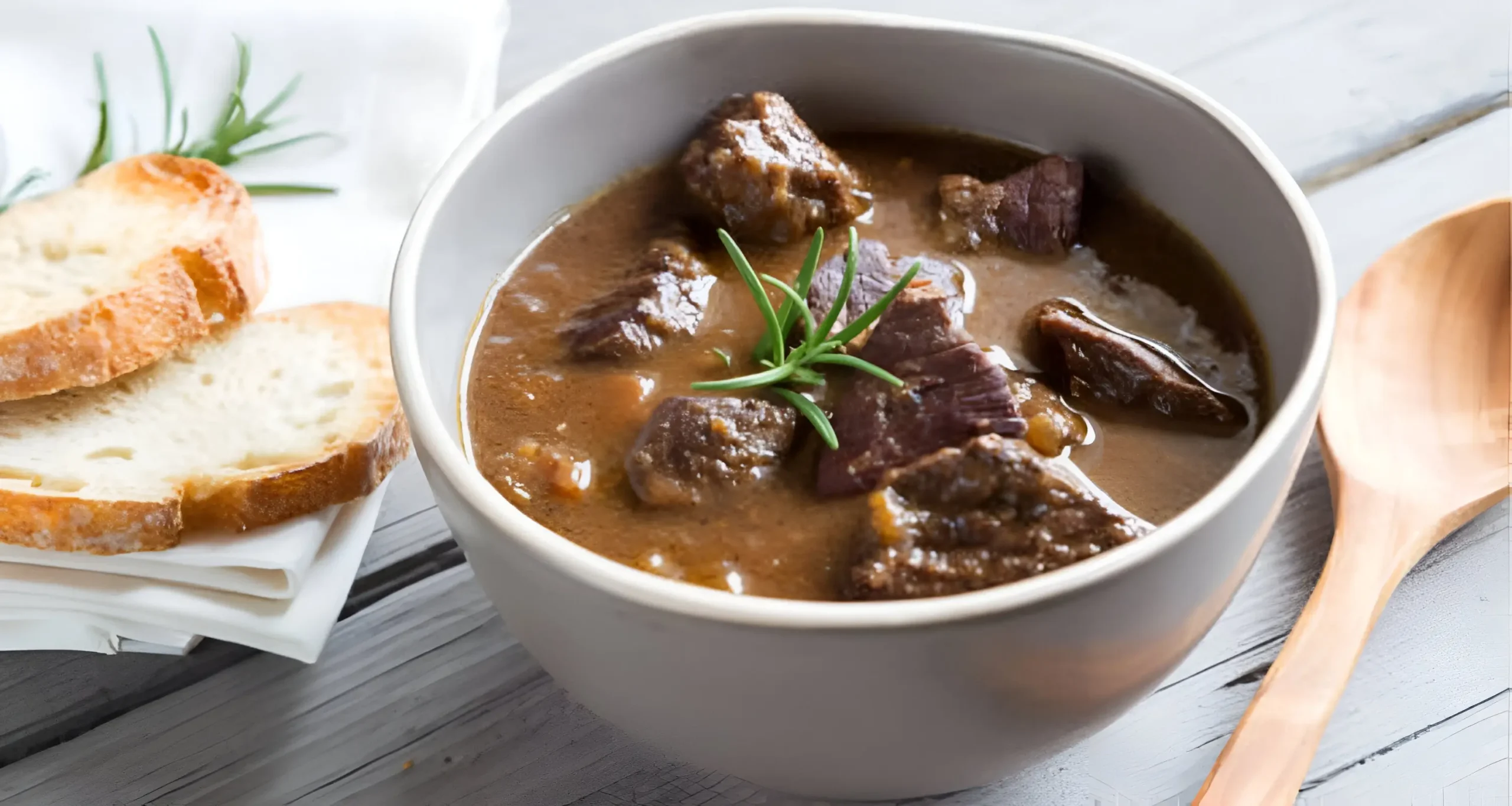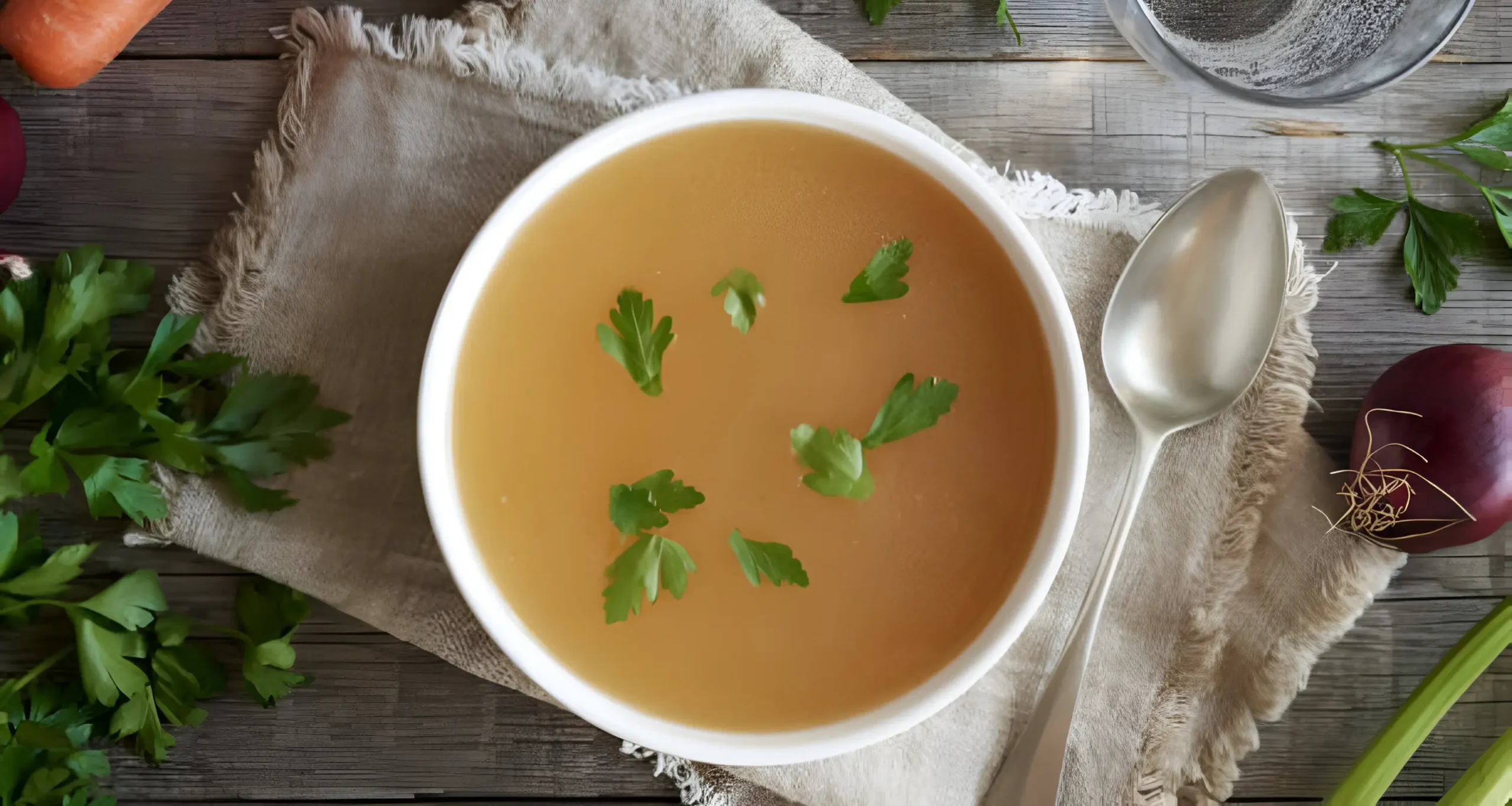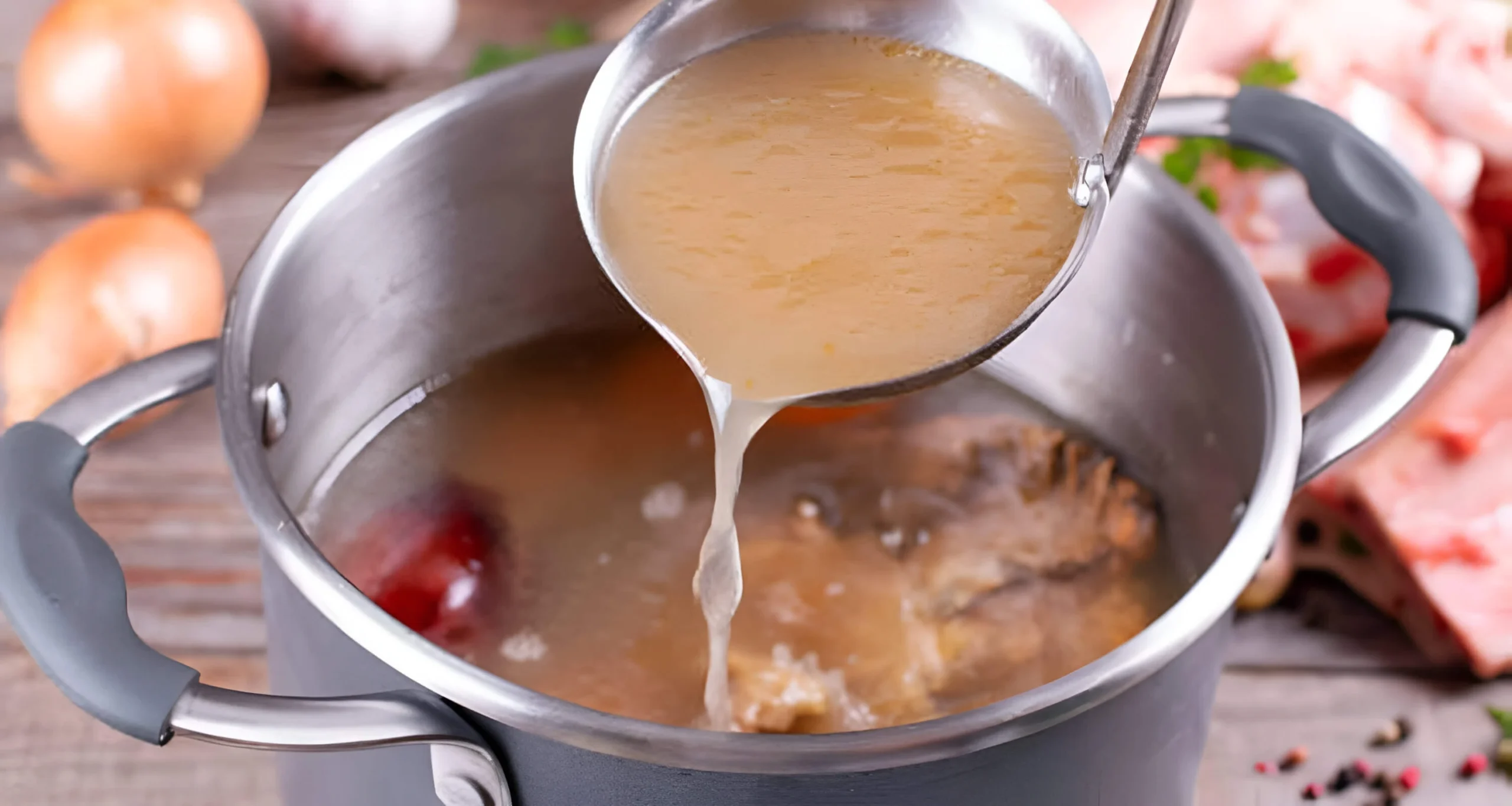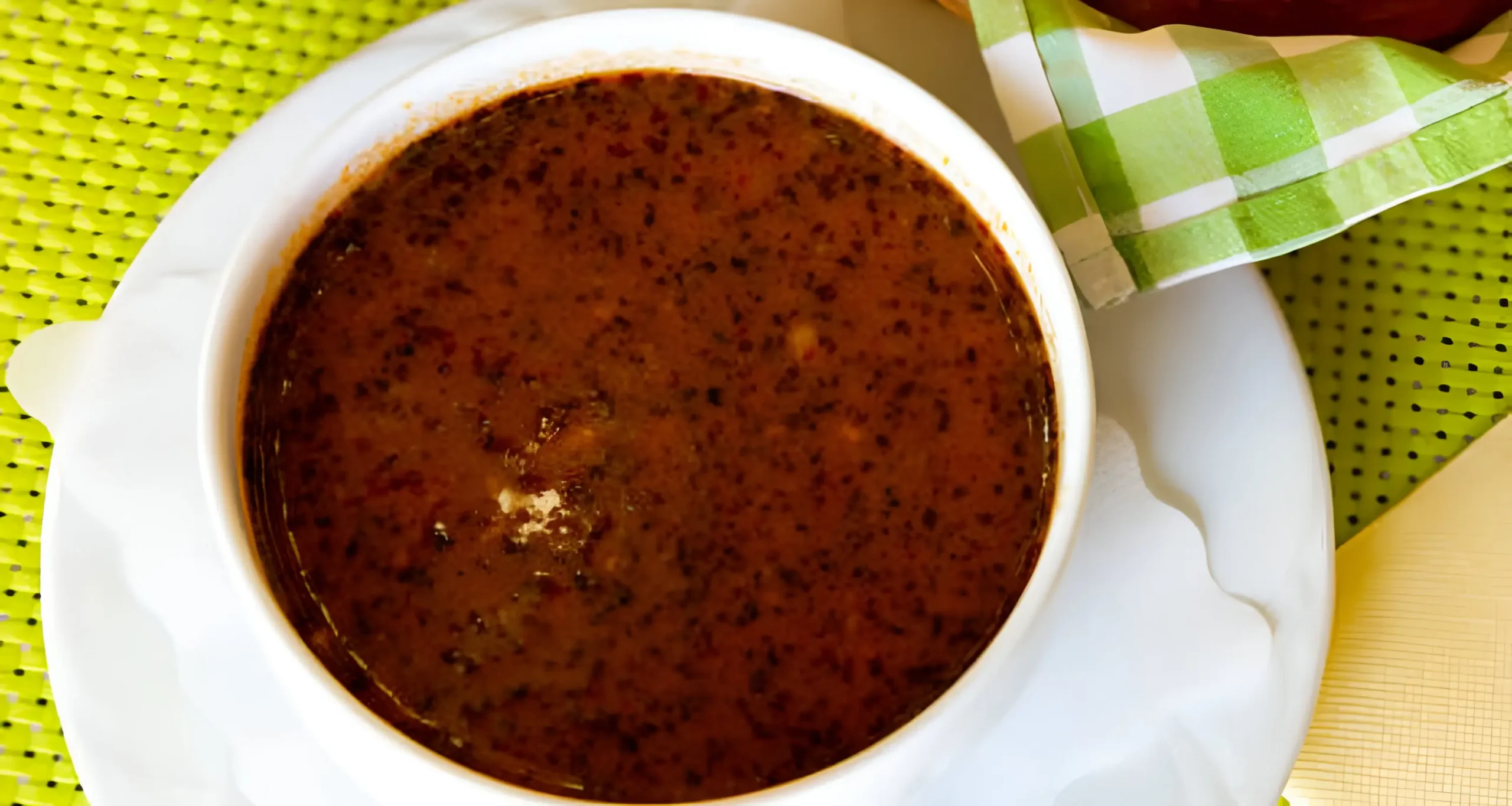Clam Chowder Recipe: How to Make It Rich and Flavorful

There are nights when you need a bowl that feels like a warm hand on your shoulder. Maybe you got home late from work, or the weather turned sharp and gray. A clam chowder recipe can make the day right again. You’ll learn a clear clam chowder recipe that gives reliable comfort, bright flavor, and a texture that feels indulgent without being heavy.
This guide shows you how to make a homemade clam chowder recipe that balances richness and brightness. Whether you choose a classic New England clam chowder recipe or want to try small variations, you’ll get practical steps. You’ll also learn about ingredient choices and simple troubleshooting, so your chowder turns out like a creamy clam chowder recipe every time.
Key Takeaways
- You’ll learn a dependable clam chowder recipe that’s creamy, flavorful, and easy to follow.
- The guide focuses on texture, seasoning, and practical techniques for home cooks.
- Instructions work for weeknight meals, dinner parties, and seasonal comfort cooking.
- Expect tips on using fresh or canned clams, dairy choices, and thickening methods.
- Later sections cover make-ahead options, variations, and troubleshooting steps.
Why This Clam Chowder Recipe Works Every Time
You want a clam chowder recipe that feels rich but never heavy. This recipe balances butter and cream for a smooth mouthfeel. It also adds a bright note to keep flavors lively.
Small tweaks, like a teaspoon of lemon juice or a splash of white wine, can make a big difference. These additions prevent the soup from feeling flat. Taste as you go and add a bit of acidity until the broth sings.
Texture is key. For a classic New England clam chowder recipe, aim for a thick, velvety broth. Use Russet or Yukon Gold potatoes for their starch and firm bite.
Partially mashing some potatoes or using a light roux adds body without making the soup too thick. If you prefer chunkier bites, keep more potato intact and add clams near the end.
Building deep flavor is simple but takes patience. Sweat onions and celery over low heat until they’re soft. Avoid browning to keep the base sweet and clean.
Deglaze the pan with clam juice or white wine to add savory depth. Simmer gently to reduce and concentrate flavors. Finish the chowder off heat when adding cream or milk to prevent curdling.
The right sequence is as important as the ingredients. Start with aromatics, add starch and stock, simmer to marry flavors, then fold in clams and dairy. These steps ensure a creamy clam chowder recipe that highlights briny clams without overpowering them.
Ingredients for a Rich New England Clam Chowder
To make a delicious homemade clam chowder recipe, you need the right ingredients. Choose clams, a good stock, and dairy that you like. Add aromatics to make the broth rich.
Here’s a list of what you need and some tips. It helps you decide when to use fresh clams and when canned ones are better.
Fresh clams vs canned clams: what to use
Fresh littlenecks or cherrystones give the best taste and texture. You need to steam, shuck, and strain them to get the flavor. They’re perfect for a restaurant-style soup.
Canned clams are convenient and consistent. Look for Crown Prince or Wellfleet in their juice. Save the juice to add to your stock for more flavor when you’re short on time.
Stock, cream, and dairy choices for creaminess
Start with bottled clam juice and low-sodium seafood or chicken stock. The mix of stock and clam juice affects the flavor.
Heavy cream or half-and-half make the chowder creamy. Whole milk makes it lighter. Mixing milk and cream is a good middle ground.
Unsalted butter is great for sautéing aromatics. Salt the chowder at the end to avoid over-salting.
Herbs, spices, and aromatics that elevate flavor
Yellow onion, celery, and garlic are key aromatics. Cook them in bacon fat or unsalted butter for a smoky flavor.
Add a bay leaf and a pinch of thyme while simmering. Black pepper keeps it mild. Finish with fresh parsley for color and freshness.
For extra flavor, try a bit of Worcestershire or Old Bay. Use dried herbs sparingly, as they’re stronger than fresh ones. For example, use 1 teaspoon dried thyme for 1 tablespoon fresh.
| Ingredient | Best Choice | Use Tip |
|---|---|---|
| Clams | Fresh littlenecks or cherrystones | Steam, shuck, strain juice; add last to avoid overcooking |
| Canned clams | Crown Prince or Wellfleet | Use with reserved juice to boost stock; great shortcut |
| Stock | Low-sodium seafood or chicken + clam juice | Combine for balanced body and clam flavor |
| Dairy | Heavy cream or half-and-half | Mix with whole milk to control richness |
| Fat for sauté | Unsalted butter or rendered bacon fat | Use fat to brown vegetables and add mouthfeel |
| Herbs & spices | Bay leaf, thyme, black pepper, parsley | Add thyme during simmering; finish with parsley |
| Optional boosters | Worcestershire, Old Bay | Use sparingly to deepen flavor without overpowering |
Step-by-Step Cooking Method for Homemade Clam Chowder
Make a delicious clam chowder at home by following a simple guide. Start by getting your clams ready and making the clam juice. Then, sauté some veggies to create a tasty base. Choose how to thicken it for a smooth finish. Each step is easy to follow, ensuring your chowder is both tasty and consistent.
Preparing clams and clam juice for maximum taste
First, clean fresh clams in cold salted water for 20–30 minutes. Use 2 tablespoons of salt for every quart of water. After cleaning, rinse the shells under cold water.
Steam the clams until they open, about 3–7 minutes. Take out the opened clams and save the cooking liquid. Strain this liquid to remove any sand or debris.
Then, shuck and chop the clams into bite-sized pieces. If using canned clams, drain them and save some of the liquid for extra flavor. Use this liquid in your chowder for a richer taste.
Sautéing vegetables to form the flavor base
Start by cooking diced bacon or butter in a pot over medium heat. Wait until the fat melts, then add onions, celery, and garlic. Cook these for 5–8 minutes, stirring often, until they’re soft but not brown.
Add fresh thyme and a bay leaf for extra flavor. Use a bit of white wine or clam stock to deglaze the pan. This step is key to your chowder’s flavor.
Thickening techniques for a silky chowder
For a classic method, make a roux by cooking butter and flour together for 2–3 minutes. Then, add the roux to the pot with clam stock and potatoes. Simmer until the potatoes are tender, about 10–15 minutes.
For a quicker option, use beurre manié (softened butter mixed with flour) towards the end. This keeps the chowder smooth. For gluten-free thickening, mix in a cornstarch slurry or mash some cooked potatoes and stir them back in.
Once the potatoes are tender, reduce the heat. Stir in the chopped clams and cream without heating it up. Taste and adjust the seasoning. Serve your homemade clam chowder recipe warm in bowls.
How to Make an Easy Clam Chowder Recipe for Busy Weeknights

You can enjoy a rich bowl of clam chowder on a weeknight without spending hours in the kitchen. Use smart shortcuts and swaps to keep the flavor rich while saving time. These tips will help you make a quick clam chowder recipe that tastes homemade. Plus, you can plan a make-ahead clam chowder recipe for those busy days.
Shortcuts that retain flavor
Use high-quality bottled clam juice and canned clams to save hours of work. Buy pre-chopped mirepoix or frozen diced onion, celery, and carrot to skip slicing. Crisp pre-cooked bacon or pancetta in a skillet, then toss it in at the end for texture and smoky depth.
Time-saving ingredient swaps
Choose Yukon Gold potatoes for faster cooking and a creamy base. Use half-and-half instead of heavy cream for a quicker and lighter finish. If you need stock fast, mix low-sodium chicken stock with bottled clam juice or use a reliable pre-made seafood stock.
When fresh clams are hard to find, frozen clams work well after thawing. For the quickest route, microwave-steam clams until they open, then add their juices. To thicken the broth without making a roux, pulse an immersion blender briefly in the pot to mash some potatoes and vegetables into the liquid.
Make-ahead and reheating tips
Chowder usually develops a richer flavor the following day as the ingredients blend. Cool the soup quickly and refrigerate within two hours in shallow containers to keep the quality high. Label with the date and use within three days for best results.
Reheat on low heat and stir frequently to prevent scorching. Add a splash of stock or milk while warming to restore silkiness. If the chowder looks tight after cooling, a warm splash of half-and-half loosens texture without diluting flavor.
| Task | Time Saved | Recommended Swap |
|---|---|---|
| Prep aromatics | 10–15 minutes | Pre-chopped mirepoix from grocery |
| Clam preparation | 30–60 minutes | Canned clams or frozen clams, bottled clam juice |
| Thickening | 10–20 minutes | Immersion blender or Yukon Gold potatoes |
| Dairy finish | 5 minutes | Half-and-half instead of heavy cream |
| Reheat and restore | 5–10 minutes | Warm stock or milk splash to regain creaminess |
Variations: New England Clam Chowder vs Manhattan Clam Chowder Recipe
Learning to tell the difference between New England and Manhattan clam chowder recipes is easy. New England is creamy, while Manhattan is tomato-based. Here are some tips to make your clam chowder recipe fit either style.
Origins and broth differences.
The New England clam chowder recipe comes from coastal New England. It has a creamy broth, potatoes, and onions. Manhattan clam chowder recipe, on the other hand, comes from New York and Italian kitchens. It uses tomato broth and adds carrots and celery for flavor and texture.
How to convert one style to the other.
To make New England clam chowder into Manhattan, remove cream and thickeners. Add crushed tomatoes and more clam or vegetable stock. Add diced carrots, celery, and bell pepper, and finish with oregano and basil.
To turn Manhattan into New England, reduce the tomato and simmer until it’s milder. Add heavy cream and thicken with a roux or mashed potatoes. Include diced potatoes and sautéed onions for a creamy texture.
Flavor tweaks for personal preference.
For a deeper flavor in New England clam chowder recipe, crisp bacon or Salt Pork before cooking vegetables. Smoked paprika or ground fennel seeds add complexity without overpowering the clams.
In Manhattan clam chowder recipe, let clam juice be the main stock. Mix bottled clam juice with homemade stock for depth. Finish with fresh parsley to brighten the soup and balance the tomatoes.
Practical seasoning and ratio guide.
- Vegetable ratio for Manhattan: for every 4 cups of stock, use 1 cup total of diced carrots, celery, and bell pepper combined.
- Potato ratio for New England: 1 medium russet per 2 servings, diced and simmered until tender to thicken naturally.
- Seasoning ranges: bay leaf 1 per 6 cups stock; thyme 1/2 to 1 tsp dried; salt to taste, starting with 1/2 tsp per 4 cups stock and adjusting with clam juice.
These tips help you explore different clam chowder styles while keeping the clam the star. Adjust vegetables and seasonings to fit your taste, and enjoy a bowl that honors your favorite tradition.
Tips for a Creamy clam chowder recipe without Curdling
To keep your clam chowder recipe smooth, control the heat and timing. A quick tempering step stops dairy from separating when it meets hot broth. Use gentle simmering after adding cream to keep the texture and flavor.
Temperature control when adding dairy
Whisk a small amount of hot soup into the cream to warm it before adding it back to the pot. This tempering method reduces shock to the dairy and helps prevent curdling.
Or, remove the pot from the heat and stir the dairy in slowly. Then, return the pot to a very low simmer and keep the heat steady. Avoid letting the chowder boil after adding the dairy.
Starch and roux methods to stabilize texture
Cook a roux by toasting flour in butter for two to four minutes before adding liquid. A properly cooked roux binds fat and liquid, creating a stable base that helps the chowder remain creamy and resist separation.
Mash some cooked potatoes into the broth as another stabilizer. Potato starch thickens naturally and gives body without changing the chowder’s flavor profile.
Alternative thickeners for dietary needs
If you need gluten-free or lower-fat options, try a cornstarch slurry—mix cold water and cornstarch and stir it into simmering soup. Arrowroot and tapioca starch are also effective, but be mindful that arrowroot can break down under prolonged heat.
Gluten-free all-purpose flour works as a roux substitute when cooked briefly. Test small batches to see how each thickener affects mouthfeel and to prevent over-thickening.
- Tip: Add thickeners slowly and test consistency as you go.
- Tip: If the chowder separates, a short whisk off the heat often brings it back together.
Serving Suggestions and Pairings for Clam Chowder
Enhance your creamy clam chowder recipe with smart serving suggestions. A well-thought setup brings out the flavors and balances textures. Here are some ideas for breads, drinks, and garnishes that complement the soup’s richness.
Breads and crackers
For the perfect bread, choose a crusty sourdough boule or New England rolls. Grilled sourdough slices absorb the broth without getting soggy. Oyster crackers add a light, salty crunch. Corn muffins or garlic butter toast offer a sweet or savory contrast to the cream.
Wine and beer pairing
A crisp wine pairing can enhance the chowder’s briny taste. Try Muscadet, Sauvignon Blanc, or unoaked Chardonnay for a fresh, mineral taste. For Manhattan-style chowder, a chilled rosé or light Gamay adds a fruity touch. Pilsners, Belgian witbier, or light pale ale work well with beer pairings, keeping the palate lively.
Garnishes and finishing touches
Adding bright garnishes can brighten the dish. Sprinkle chopped parsley or chives on top. A squeeze of lemon or lemon zest adds a zesty touch. A drizzle of olive oil or black pepper can tie the flavors together. For a smoky twist, add crispy bacon bits or smoked paprika.
Below is a chart to help match chowder styles with the best pairings and serving items. It’s great for planning clam chowder recipe pairings for any occasion.
| Chowder Style | Best Bread for Clam Chowder | Wine Pairing | Beer Pairing | Top Garnish |
|---|---|---|---|---|
| New England creamy clam chowder recipe | Crusty sourdough boule, split-top roll | Muscadet or unoaked Chardonnay | Pilsner or light pale ale | Chopped parsley, lemon zest |
| Manhattan clam chowder recipe | Grilled sourdough slices, oyster crackers | Rosé or Gamay | Belgian witbier or amber ale | Fresh basil, cracked pepper |
| Weeknight quick chowder | Corn muffins or buttery garlic toast | Sauvignon Blanc | Session pale ale | Chives, olive oil drizzle |
Common Mistakes to Avoid When Making Clam Chowder

You want your clam chowder recipe to impress. A few simple mistakes can ruin it. Here’s a quick guide to help you avoid common pitfalls and keep your dinner perfect.
Overcooking clams and losing texture
Fresh clams can quickly become tough. Steam them until they open, then remove and save the juice. Chop the meat and add it back in for just 1–2 minutes. If using canned clams, add them near the end to avoid a tough texture.
Over-thickening or under-seasoning the soup
Too much flour or a thick roux makes the chowder too thick. Thicken it in small amounts and check the texture before adding more. Taste as you go to avoid over-salting. A bit of lemon or vinegar can enhance the flavor.
How to rescue a chowder that’s gone wrong
If it’s too salty, add raw potato chunks to absorb the salt. You can also dilute it with unsalted stock or milk. For a thinner chowder, mash some cooked potato into it or whisk in a cornstarch slurry.
If the soup separates, remove it from heat and whisk in cold cream or an ice cube. Blending a small part and stirring it back in can also fix the texture without changing the taste.
By paying attention to timing and taste, you can avoid common mistakes. This way, your next bowl of clam chowder will be a hit, with fresh clams, perfect seasoning, and a delicious flavor.
Healthier and Dietary-Friendly Clam Chowder Recipe Options
You can enjoy a rich clam chowder recipe while cutting calories and fitting special diets. Small swaps keep creaminess, maintain seafood flavor, and make the soup easier on digestion.
Lower-fat alternatives for the creamy clam chowder recipe
Swap heavy cream for evaporated milk or low-fat half-and-half to create a lower-fat clam chowder recipe that feels indulgent. Use a milk-and-Greek-yogurt blend and temper the full-fat Greek yogurt near the end so it blends without curdling.
Replace butter with extra-virgin olive oil and trade pork bacon for lean turkey bacon. These swaps lower saturated fat while preserving savory depth in your clam chowder recipe.
Gluten-free and dairy-free adaptations
For a gluten-free clam chowder recipe, skip a wheat roux and use a cornstarch or arrowroot slurry to thicken the broth. If you prefer a dairy-free clam chowder recipe, choose canned full-fat coconut milk or unsweetened oat milk for creaminess. Expect a subtle change in flavor with those milks.
If you want a roux, buy a certified gluten-free all-purpose flour. Check canned clams for additives and look for labels that say “no fillers” or list only clams and water to keep ingredients simple.
Portion and calorie considerations
A reasonable serving is about 1 to 1 1/2 cups per person. Traditional New England clam chowder recipe often ranges from 350 to 500 calories per serving. Lighter versions with evaporated milk or vegetable-forward recipes can be around 200 to 300 calories.
To boost fullness without many extra calories, add more potatoes, corn, carrots, or a cup of chopped kale. Those vegetables add fiber and bulk so you feel satisfied on a smaller portion of chowder.
| Change | What to Use | Effect on Flavor | Approximate Calories per Serving |
|---|---|---|---|
| Heavy cream | Evaporated milk or low-fat half-and-half | Similar creaminess, lighter mouthfeel | 200–300 |
| Dairy-free milk | Unsweetened oat milk or coconut milk | Oat: neutral, Coconut: subtle sweetness | 220–320 |
| Wheat roux | Cornstarch or arrowroot slurry | Clearer broth, smooth body | 200–350 |
| Butter and pork bacon | Olive oil and turkey bacon | Less saturated fat, similar savory notes | 180–300 |
| Standard recipe | Traditional ingredients | Classic richness and mouthfeel | 350–500 |
Make-Ahead, Storage, and Freezing Tips for Homemade Clam Chowder
Planning ahead makes weeknight meals simple. If you want to prepare make-ahead clam chowder recipe, cool it quickly and store it safely to keep flavor and texture. These steps help you enjoy homemade clam chowder without last-minute stress.
Best practices for cooling and refrigerating
After cooking, move the pot to an ice bath to bring the temperature down fast. Divide the chowder into shallow airtight containers to speed cooling.
Put containers in the fridge within two hours. Use dairy-based chowders within 3–4 days for safety and peak taste.
How to freeze and thaw without losing quality
Cream can separate when frozen. For best results, freeze a chowder base with stock, potatoes, and clams, then add cream when you reheat.
If you freeze finished chowder, use freezer-safe containers and leave headspace for expansion. Label each container with the date and plan to eat it within 2–3 months for best quality.
Reheating methods to preserve creaminess
Reheat chowder slowly over low to medium-low heat and stir often to prevent scorching. Add a splash of stock or milk if the soup seems thick or dry.
Finish off the heat with a little fresh cream to reduce the chance of curdling. You can reheat using a double boiler for gentle, even warmth when you want the creamiest result.
Use these storage tips and reheating chowder techniques to keep your homemade clam chowder tasting like it was made fresh. Proper cooling, smart freezing clam chowder recipe choices, and careful reheating chowder will protect texture and flavor.
Conclusion
You now have a clear path to a reliable clam chowder recipe. It balances richness and acidity well. Choose fresh clams or quality canned ones for the best taste.
Use stock and dairy that add body without feeling heavy. When adding cream, do it gently. This ensures a silky texture without curdling.
Try different variations, like a classic New England clam chowder recipe or a Manhattan style with tomato. Use shortcuts for busy nights and swap ingredients for dietary needs. Always taste and adjust seasoning as you go.
With this guide, you can make a flavorful chowder that reheats well. It’s perfect for guests or weeknight meals. Bookmark this guide and save your favorite tweaks. Each batch will teach you more about what you like in your clam chowder.
FAQ
What’s the difference between New England clam chowder and Manhattan clam chowder recipe?
New England clam chowder recipe is creamy and thick, made with potatoes and bacon. Manhattan clam chowder is tomato-based, with veggies like carrots and celery, and no dairy. You can change one to the other by adding or removing tomatoes, adjusting liquids, and using cream or not.
Is it possible to substitute canned clams for fresh ones?
Yes. Canned clams and juice are easy and taste good. Use quality brands, save the juice for the broth, and add canned clams at the end. Fresh clams are better for taste and texture but need steaming and shucking.
How do I prevent the cream from curdling in clam chowder?
Keep the heat low when adding cream. Whisk it with hot broth first. Use a roux or mashed potatoes to help the cream stay smooth. Avoid boiling after adding cream.
What thickening methods work best for a silky, creamy chowder?
Use a flour roux, beurre manié, or mashed potatoes for thickening. For gluten-free, try cornstarch, arrowroot, or tapioca starch. Pick what works for you.
How much lemon or acid should I add so the chowder isn’t flat?
Start with 1 teaspoon of lemon juice per 4–6 servings. You can also use white wine or apple cider vinegar. Add a little at a time to keep it bright without being too acidic.
What potatoes are best for a clam chowder recipea?
Yukon Gold or Russet potatoes are good. Yukon Gold is creamy, while Russet is better for mashing. Cut them into small pieces for even cooking.
Can I make clam chowder ahead and reheat it later?
Yes. Chowder tastes better the next day. Cool it quickly, refrigerate in shallow containers, and use within 3–4 days. Reheat gently and add stock or milk to restore creaminess.
Is it okay to freeze the clam chowder recipe?
Freezing is okay, but dairy can separate. Freeze the base without cream and add it when reheating. Use airtight containers and freeze for 2–3 months.
How do I avoid overcooking clams so they don’t get rubbery?
Steam fresh clams until they open, then add the meat for a minute. For canned clams, add them just before serving to keep them tender.
What are quick shortcuts for a tasty clam chowder recipe on weeknights?
Use bottled clam juice and canned clams, pre-chopped veggies, and pre-cooked bacon. Thicken with an immersion blender for quickness. These shortcuts save time without sacrificing flavor.
How can I make a lower-fat or dairy-free clam chowder recipe?
Use low-fat milk or a Greek yogurt and milk blend for less fat. For dairy-free, try oat milk, coconut milk, or cashew cream. Thicken with cornstarch or arrowroot and adjust flavors.
What wines or beers pair best with creamy or tomato-based clam chowder recipe?
For creamy chowder, choose crisp whites like Muscadet or Sauvignon Blanc. For tomato-based, a rosé or light red like Gamay works well. Pale ales pair with both.
My chowder tastes overly salty—what’s the best way to fix it?
Add raw potatoes to absorb salt, then remove them. Or dilute with unsalted stock or water. Add cream or milk to balance the salt. Adjust slowly.
Can I convert a New England chowder to Manhattan style mid-recipe?
Yes. Remove dairy, add more clam juice, and tomatoes. Include carrots and bell peppers. Change herbs to oregano and basil for a tomato-rich taste.
What garnishes elevate clam chowder recipe when serving?
Top with parsley, lemon zest, black pepper, and olive oil. Add bacon or smoked paprika for smokiness. Serve with oyster crackers or bread for dipping.






